
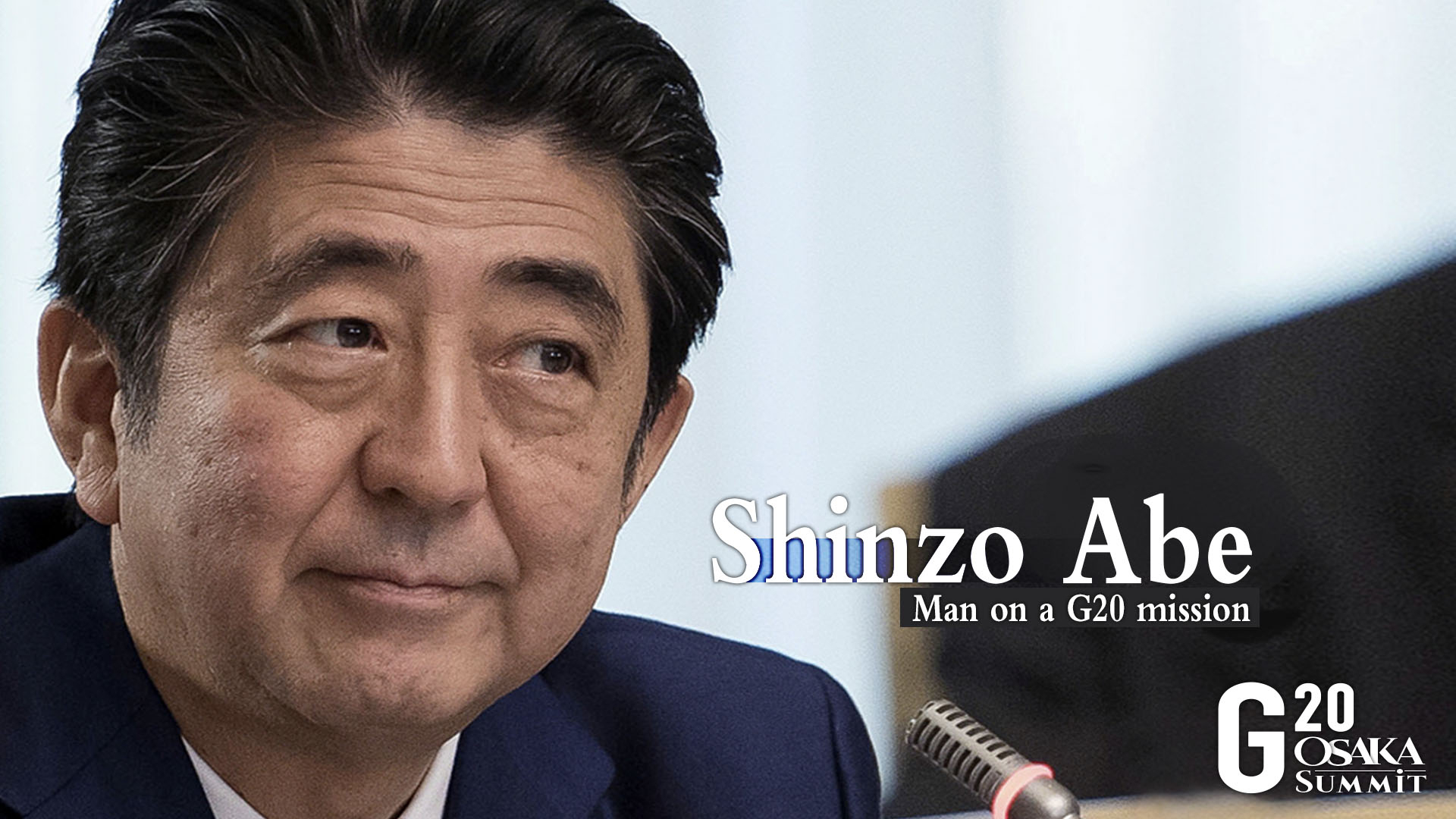
When the G20 rolls into Osaka on Friday, Japanese Prime Minister Shinzo Abe will push the traditional summit message of international cooperation – but will likely need to lean heavily on his newfound role as a mediator in the current, strained atmosphere of global relations.
The G20 has been most influential at times of economic crisis, yet – while warning signs are flashing 11 years on from the last global economic catastrophe – it is amid discord over bilateral trade and volatility in U.S. relations with Iran that world leaders will meet.
Fears over what those issues could trigger will add tension to the summit, and part of Abe's challenge as host will be to try to coax dialogue, if not consensus.
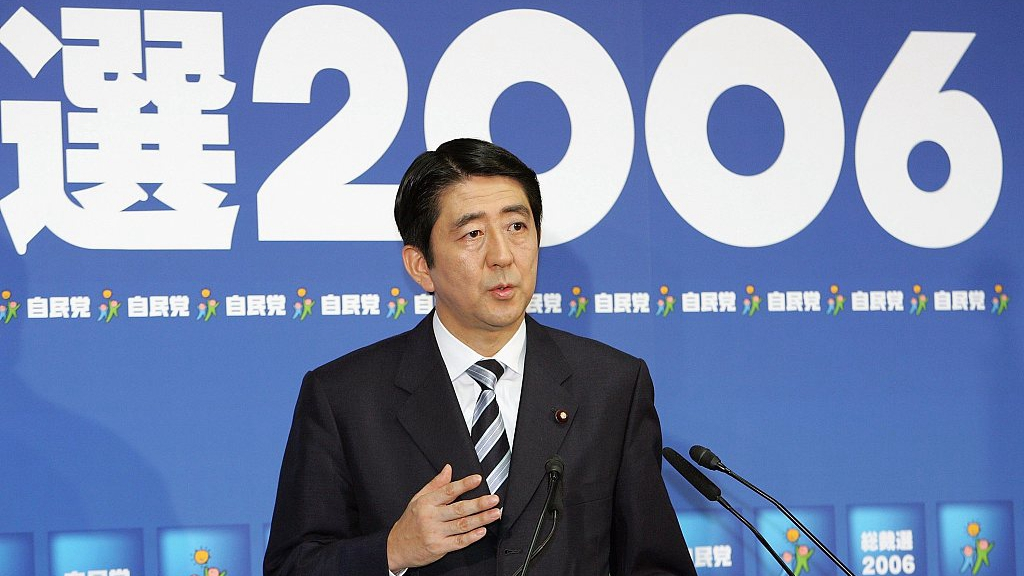
Shinzo Abe speaks during a press conference, days before being approved as Japan's prime minister, in Tokyo, September 20, 2006. /VCG Photo
Abe is part of a political dynasty. His grandfather and great uncle were both prime ministers of Japan, and his father was foreign minister as well as a senior official in the Liberal Democratic Party.
The 65-year-old's own journey to the top hasn't always been smooth since taking over his father's parliamentary seat in 1993, but after a rocky year as prime minister in 2006, he returned to the top job in 2012 and has since been the dominant figure in Japanese politics.
Over the following seven years, he has developed a signature policy – Abenomics – an economic plan featuring aggressive fiscal expansion and monetary easing as well as structural reforms, aimed at reviving Japan's economy after more than two decades of deflation.
It now includes "Society 5.0" – using big data to find solutions to major structural issues such as the aging society and shrinking population, an approach which is also part of the G20 agenda.
Results have been mixed. The heavy stimulus has led to growth, but not strong expansion, and inflation targets have been missed. It has also been complicated by the trade policies of the United States following the election of Donald Trump.
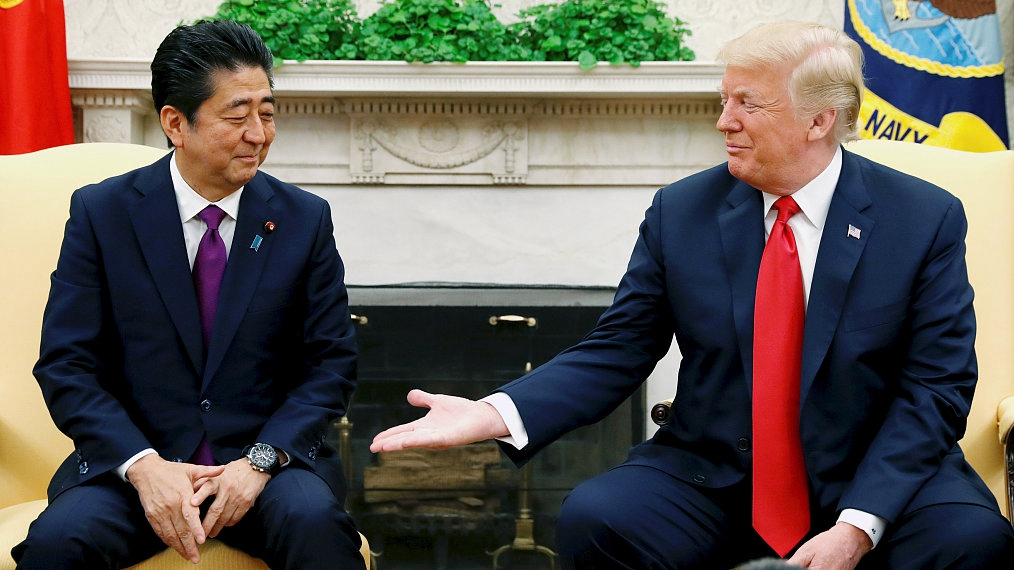
U.S. President Donald Trump (R) meets with Japanese Prime Minister Shinzo Abe in the White House in Washington, DC, U.S., June 7, 2018. /VCG Photo
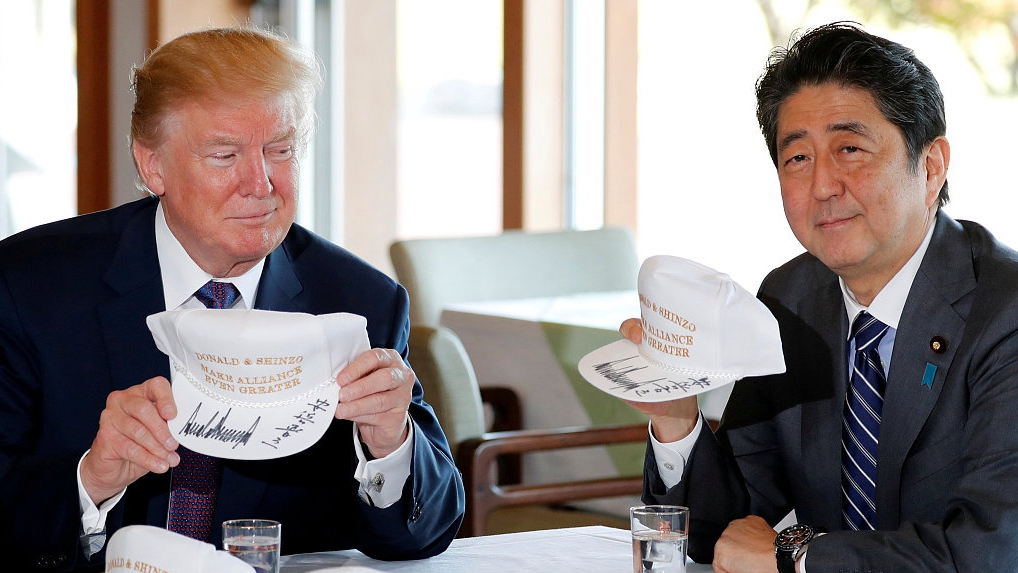
Donald Trump (L) and Shinzo Abe hold hats reading "Donald & Shinzo Make Alliance Even Greater" in Kawagoe, Japan, November 5, 2017. /VCG Photo
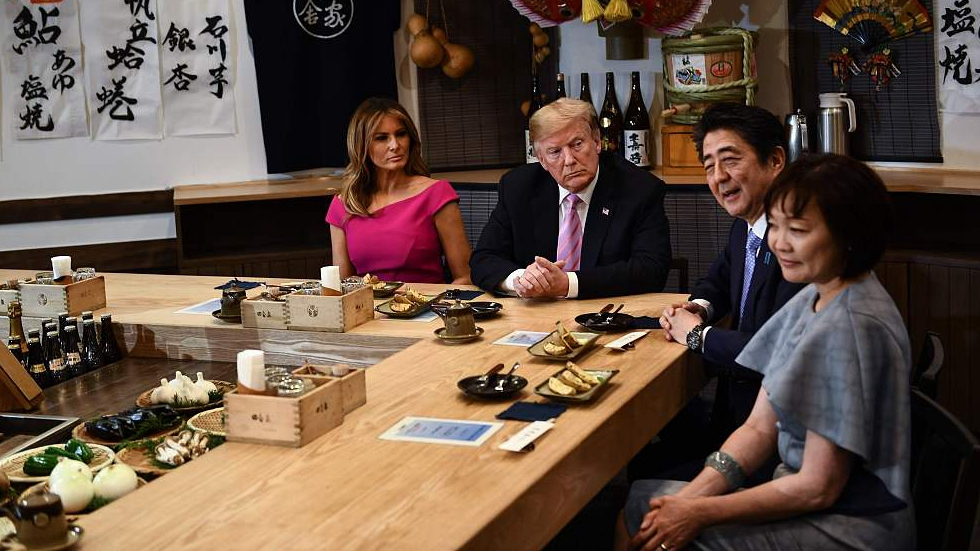
Trump and his wife Melania Trump join Abe and his wife Akie Abe for dinner in Tokyo, May 26, 2019. /VCG Photo
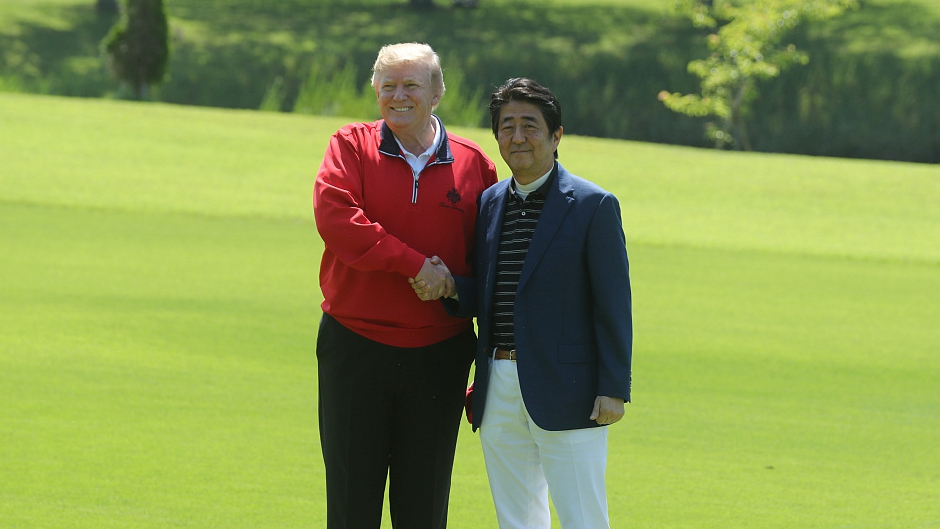
Trump is welcomed by Abe upon his arrival at Mobara Country Club in Mobara, Chiba Prefecture, Japan, May 26, 2019. /VCG Photo
Abe was quick to spot the difficulties Trump could pose to Japan's economy and has courted the American president with steak, hats and golf, working to minimize the threat of a breakdown in Japanese-U.S. relations on issues from trade to defense.
However, the danger of tariffs on imports of Japanese autos remains live: Trump has voiced displeasure at Tokyo's trade surplus with Washington, and the decision to pull the U.S. out of the Trans-Pacific Partnership (TPP) was a blow to Abe's long-term plans.
Reducing trade barriers is an important part of Abe's current approach, and signing off the Japan-European Union trade deal, the world's biggest and a counterweight to U.S. protectionism, in 2018 was a major achievement.
Japan also led the negotiations to revive TPP following the U.S. withdrawal, resulting in the establishment of the Comprehensive and Progressive Agreement for Trans-Pacific Partnership. The two deals put the country at the center of a free trade area with approximately one billion people.
Abe will find solidarity on tariffs with G20 members from China to India, Mexico to the EU – all have been targeted on trade by Washington to varying extents since 2017 – and discussions on WTO's reform are likely to be an important part of the main summit agenda.
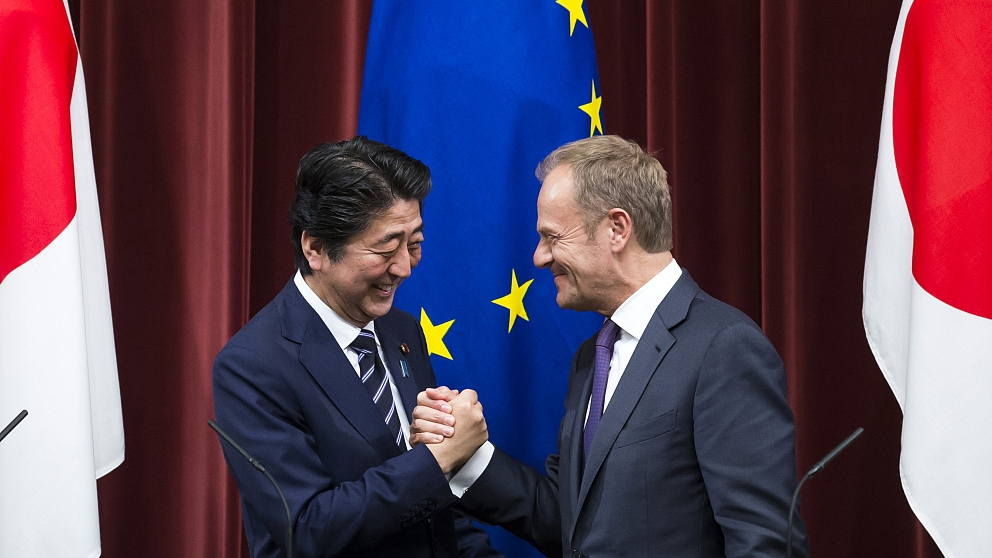
Shinzo Abe, Japan's prime minister, shakes hands with Donald Tusk, president of the European Council, after a Japan-EU trade deal was signed, in Tokyo, Japan, July 17, 2018. /VCG Photo
Defense – on which Abe has attracted controversy by pursuing a policy to revise Japan's pacifist constitution despite misgivings within his own party, the Japanese public and regional neighbors – is another issue on which the Japanese prime minister is treading carefully with the U.S.
The countries are longstanding security allies, but on the eve of the summit, reports emerged that Trump had spoken privately about ending the U.S.-Japan defense treaty and charging Tokyo for moving a military base to Okinawa.
Washington's desire to employ "America First" to military cooperation as well as trade policy is a headache for other traditional G20 allies too, though it is the dispute with Tehran where Abe's diplomatic skills could face the most severe test in Osaka.
The simmering U.S.-Iran feud is likely to drag in various powers at the summit, and the Japanese prime minister has found himself an unlikely player in recent weeks.
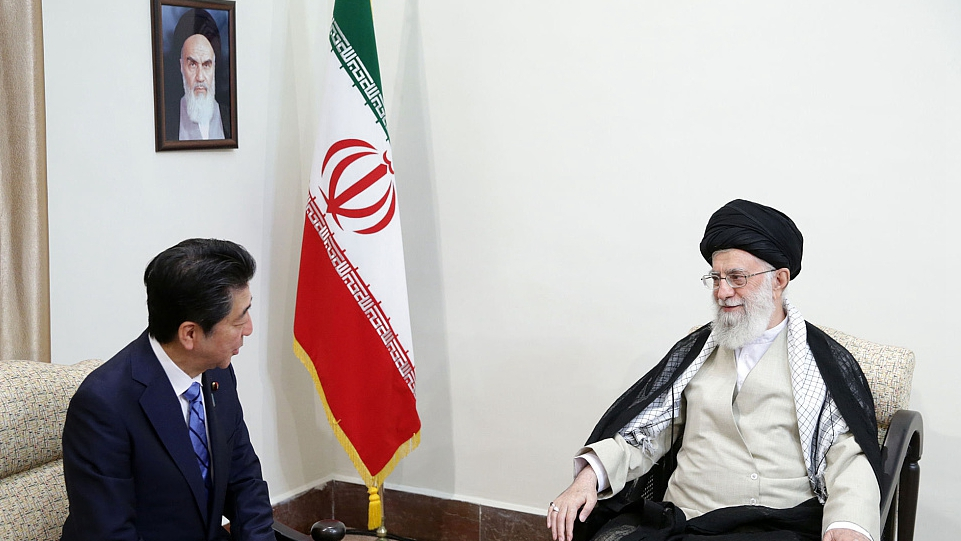
Iranian Supreme Leader Ayatollah Ali Khamenei talks to Japanese Prime Minister Shinzo Abe during a meeting in Tehran, Iran, June 13, 2019. /VCG Photo
Abe traveled to Tehran, the first sitting Japanese prime minister to do so in 41 years, in mid-June with a message from Trump that a deal with the U.S. was possible, so long as nuclear weapons were not on Iran's to-do list.
But the diplomatic mission was undermined by escalating tensions.
Trump warned on Tuesday that any attacks on American assets by Iran would be met by "great and overwhelming force" after President Hassan Rouhani responded to fresh sanctions on Tehran by saying the White House was "mentally retarded."
The dispute will loom large at the summit, especially given that all the signatories to the Iran nuclear deal – other than Iran – will attend. Abe, who backs the deal, will continue to have a role in what is likely to be a long-running diplomatic dispute, starting by trying to facilitate talks over the coming days.
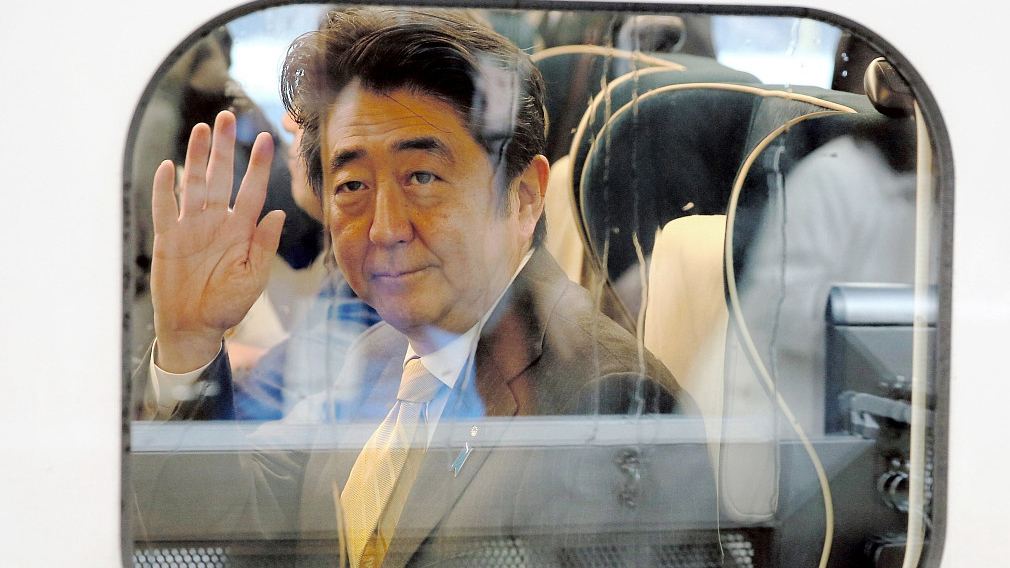
Japanese Prime Minister Shinzo Abe waves after boarding a Hokuriku Shinkansen bullet train in Tokyo, April 11, 2015. /VCG Photo
But the current reality of the G20 suggests it will be bilateral meetings rather than multilateral talks that take the headlines, limiting the influence of the host.
Unlike in 2009, when then-British prime minister Gordon Brown coordinated a 1.1-trillion-U.S.-dollar injection at the London G20 to boost the global economy, there is no single threat for the members to rally around.
Instead, from trade and security to climate, there are major divisions.
Abe has an important role as host of Japan's first-ever G20 summit, but will need all his political and diplomatic experience to balance viewpoints in Osaka and ensure the summit agenda – and his own relationship with Trump – remains on track.

Copyright © 2018 CGTN. Beijing ICP prepared NO.16065310-3
Copyright © 2018 CGTN. Beijing ICP prepared NO.16065310-3